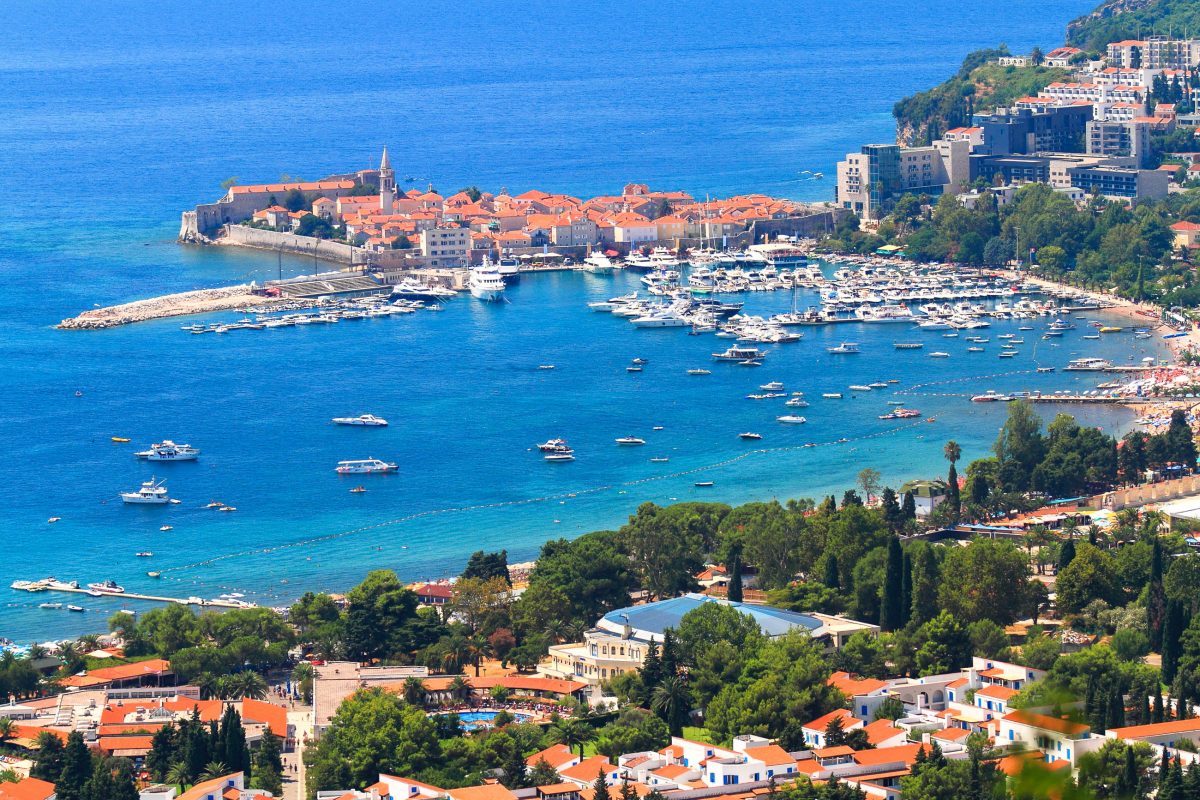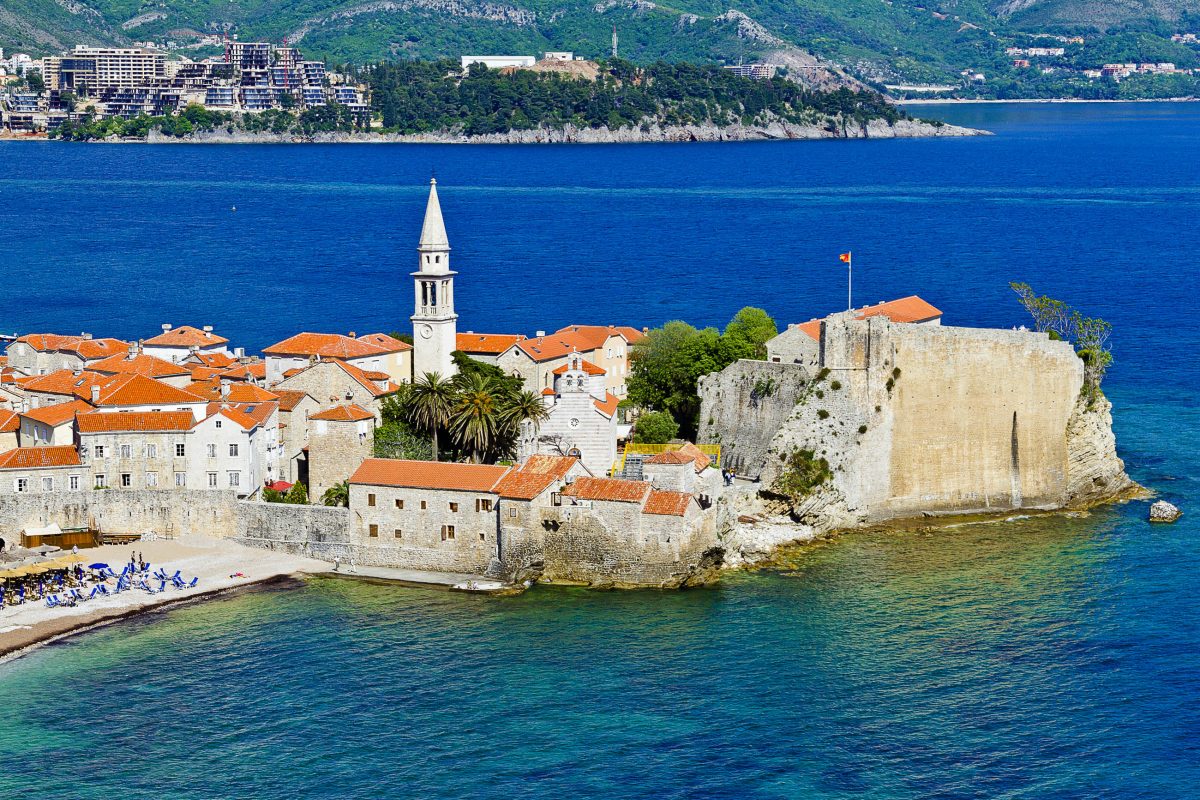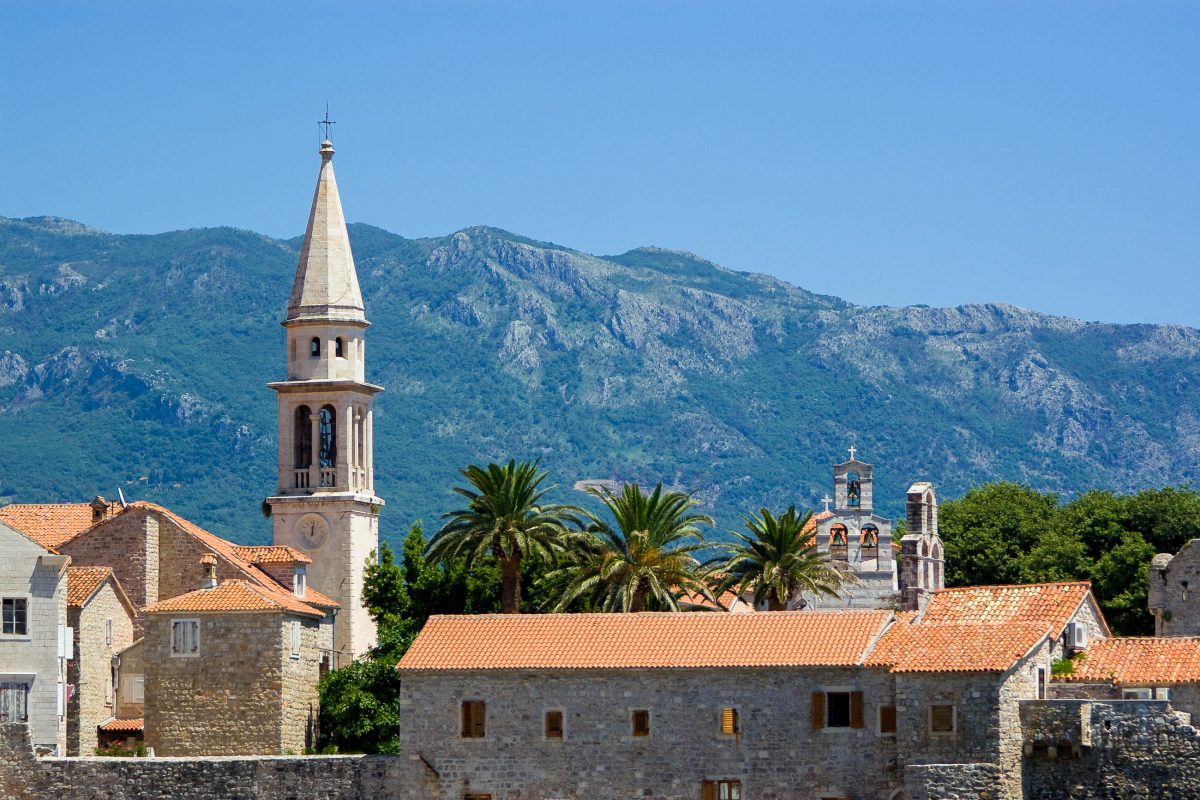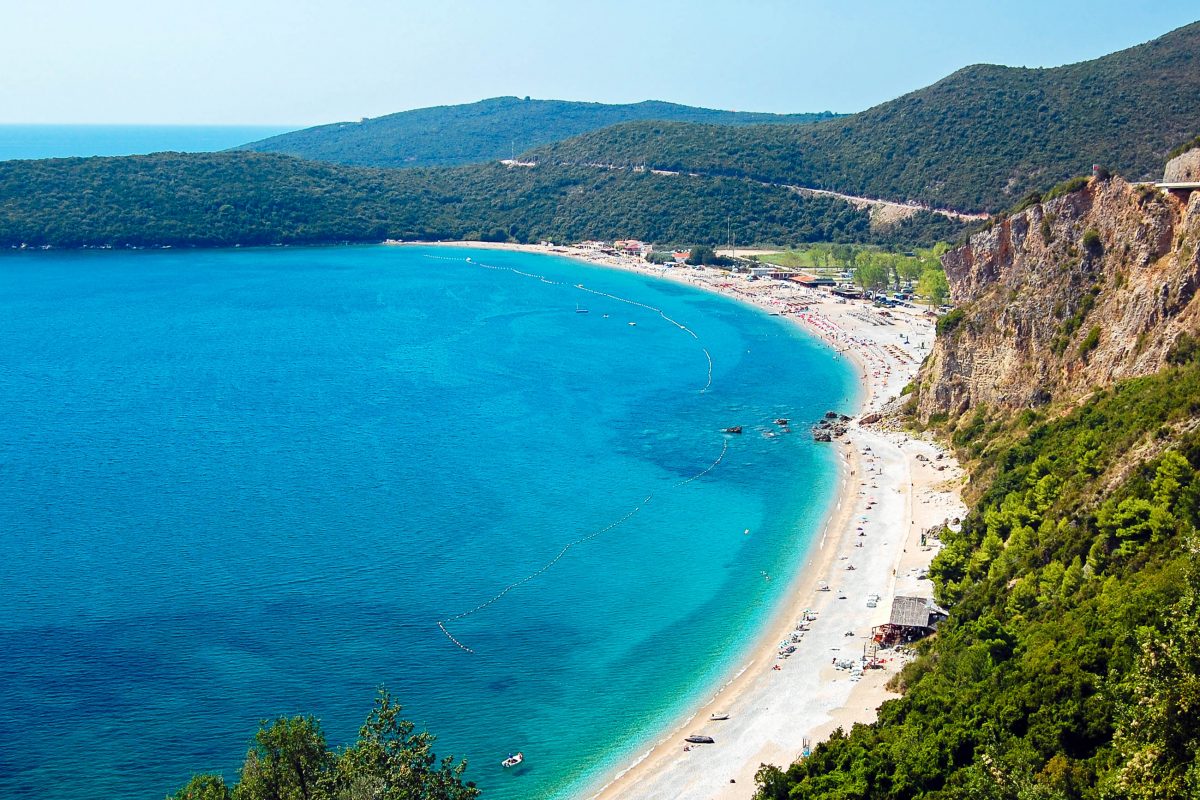Budva ist in erster Linie ein beliebtes Ferienziel für Bade-Urlaub in Montenegro. Doch hinter den historischen Mauern der Altstadt verstecken sich auch einige architektonische Juwelen, deren Entdeckung sich in jedem Fall lohnt!
Budva ist nicht zuletzt aufgrund seiner schönen Strände eine der wichtigsten Touristen-Städte Montenegros. Durch die überwiegend serbischen Gäste wird Budva scherzhaft auch als „Hausstrand von Belgrad“ bezeichnet, mittlerweile finden auch immer russische Urlauber den Weg ins traumhafte Budva. Dementsprechend groß ist auch das touristische Angebot.
Inhaltsverzeichnis
BILDER: Budva
„Basislager“ Budva
Budva ist aufgrund seiner Lage und der gut ausgebauten Infrastruktur der ideale Ausgangspunkt für Entdeckungstouren durch Montenegro. Abgesehen von der montenegrinischen Adriaküste bieten sich die sündteure Hotelinsel Sveti Stefan, die historische Altstadt von Bar, der Skadar-See, die Bucht von Kotor, Podgorica über Cetinje oder das Kloster Ostrog als Reiseziele an. Lediglich für die Gebirge des Hinterlandes ist es zu weit für einen Tagesausflug.
Altstadt von Budva

Budva ist uralt. Der Mythologie zufolge wurde Budva vor über 2.500 Jahren von Kadmos, Sohn des phönizischen Königs Agenor, gegründet nachdem er von Theben verbannt wurde. Zwischen den Stadtmauern und den Bergen wurde ein alter Friedhof freigelegt, dessen Gräber vom 4. bis zum 6. Jahrhundert angelegt wurden. Teile des Areals bilden heute die Inneneinrichtung des Caffe2Millenium.
1979 wurde Budva durch ein verheerendes Erdbeben stark beschädigt, jedoch originalgetreu wieder aufgebaut und steht heute unter Denkmalschutz. Die Fassaden wirken deswegen nicht ganz so antik.
Das historische Zentrum von Budva zählt zu den schönsten Altstädten Montenegros. Die engen Gassen Budvas werden oft zu klein für die Menschenmengen, die zwischen Minimärkten und Cafés zu den einzelnen Sehenswürdigkeiten spazieren. Die meisten davon liegen im Osten der Altstadt, aber auch der Rest der Altstadt ist mit seinen verwinkelten Sträßchen eine Erkundung wert.
Stadtmauern und Zitadelle

Die heutigen Stadtmauern stammen aus dem Mittelalter, die ältesten und heute niedrigsten Teile wurden von den Phöniziern angelegt, der Rest von den Veneziern und Österreichern.
Der wichtigste Teil der Stadtbefestigung ist die Zitadelle auf dem Hügel. Ihr heutiges Erscheinungsbild stammt ebenfalls von den Österreichern, die zur Eigenversorgung sogar eine eigene kleine Bäckerei anbauten. Dazu musste die kleine Kirche Sveti Marija weichen, deren Fresken heute in der West- und Nordwand der Zitadelle zu finden sind.
Neben der wunderbaren Aussicht gehören ein Café und ein Restaurant zu den heutigen Angeboten der Zitadelle. Im Sommer finden hier oft Freiluftveranstaltungen statt.
Kirche Sveti Troica
Auf dem größten Platz der Altstadt direkt unter der Zitadelle thront die Kirche Sveti Troica. Das orthodoxe Gotteshaus der Hl. Dreifaltigkeit wurde 1804 fertiggestellt und fällt durch ihr rot und weiß gemustertes Mauerwerk auf.
Kirche Sveti Ivan

Der Kirchturm, der unübersehbar über den ziegelroten Dächern von Budvas Altstadt thront, gehört allerdings der Kirche Sveti Ivan aus dem 15. Jahrhundert, von den Einheimischen schlicht und einfach „katedrala“ genannt.
Während der Turm aus dem Jahr 1876 stammt, wurden im Inneren der Kirche Bodenmosaike gefunden, die auf das 6. Jahrhundert zurück gehen. Der Legende nach beherbergt die Kirche eine unbezahlbare Ikone der Muttergottes mit dem Jesuskind, die angeblich vom Evangelisten Lukas angefertigt wurde.
Kirchen Sveti Marija in Punta und Sveti Sava

Etwas weiter Richtung Meer liegt das malerische Kirchenensemble von Sveti Marija in Punta, die älteste Kirche Budvas mit markantem Rundturm, und Sveti Sava, die des Öfteren zwischen orthodoxer und römisch-katholischer Kirche herumgereicht wurde.
Festungen und Klöster rund um Budva
Auch außerhalb der Stadtmauern gibt es noch einiges zu sehen. In den Bergen um Budva sind wie zufällig verstreut Überreste von Festungen und Klöstern zu finden, darunter die ehemalige k.u.k.-Festung Mogren auf dem Berg Spas, die im Jahr 1860 von den Österreichern errichtet wurde oder das Kloster Podostrog, das über einen 3km langen Spaziergang erreicht werden kann.
Strände von Budva

In den Sommermonaten sind die Strände um Budva leider meist hoffnungslos überfüllt. Freie Plätze am Strand müssen dann mühsam gesucht werden und Parkplätze sind ohnehin Mangelware. Dennoch sollte man den traumhaften Stränden von Budva einen Besuch abstatten.
Sveti Nikola

Ähnlich der Insel Lokrum vor der kroatischen Stadt Dubrovnik ragt vor Budva die nur von einem Leuchtturmwärter bewohnte Felseninsel Sveti Nikola aus dem Wasser. Der eine Kilometer bis zur Insel kann schwimmend oder mit einem der Boote zurückgelegt werden, die mehrmals täglich von Budva aus die drei kleinen Strände auf Sveti Nikola ansteuern.
Weiterführende Links:





